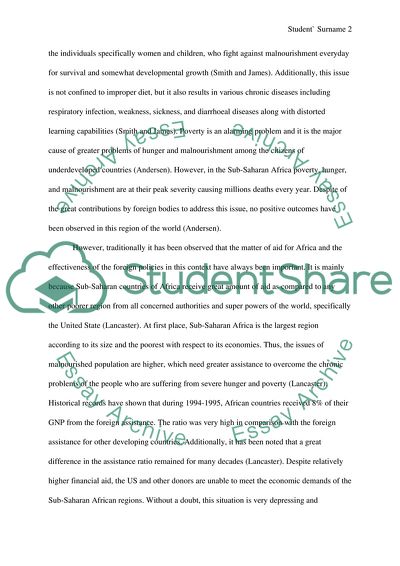Cite this document
(US Assistance to Address Malfunctioning in Sub-Saharan Africa Research Paper Example | Topics and Well Written Essays - 2250 words, n.d.)
US Assistance to Address Malfunctioning in Sub-Saharan Africa Research Paper Example | Topics and Well Written Essays - 2250 words. https://studentshare.org/politics/1768298-does-the-us-foreign-aid-assistance-help-to-address-malnutrition-in-sub-saharan-africa
US Assistance to Address Malfunctioning in Sub-Saharan Africa Research Paper Example | Topics and Well Written Essays - 2250 words. https://studentshare.org/politics/1768298-does-the-us-foreign-aid-assistance-help-to-address-malnutrition-in-sub-saharan-africa
(US Assistance to Address Malfunctioning in Sub-Saharan Africa Research Paper Example | Topics and Well Written Essays - 2250 Words)
US Assistance to Address Malfunctioning in Sub-Saharan Africa Research Paper Example | Topics and Well Written Essays - 2250 Words. https://studentshare.org/politics/1768298-does-the-us-foreign-aid-assistance-help-to-address-malnutrition-in-sub-saharan-africa.
US Assistance to Address Malfunctioning in Sub-Saharan Africa Research Paper Example | Topics and Well Written Essays - 2250 Words. https://studentshare.org/politics/1768298-does-the-us-foreign-aid-assistance-help-to-address-malnutrition-in-sub-saharan-africa.
“US Assistance to Address Malfunctioning in Sub-Saharan Africa Research Paper Example | Topics and Well Written Essays - 2250 Words”. https://studentshare.org/politics/1768298-does-the-us-foreign-aid-assistance-help-to-address-malnutrition-in-sub-saharan-africa.


